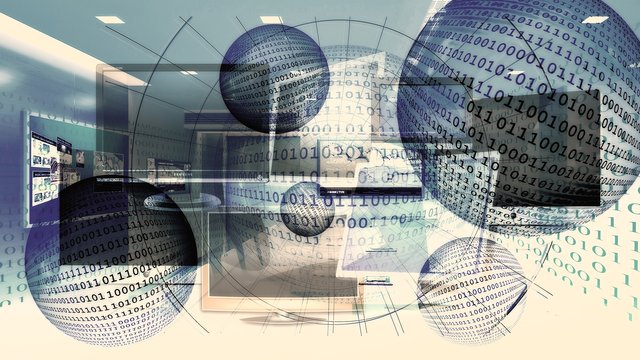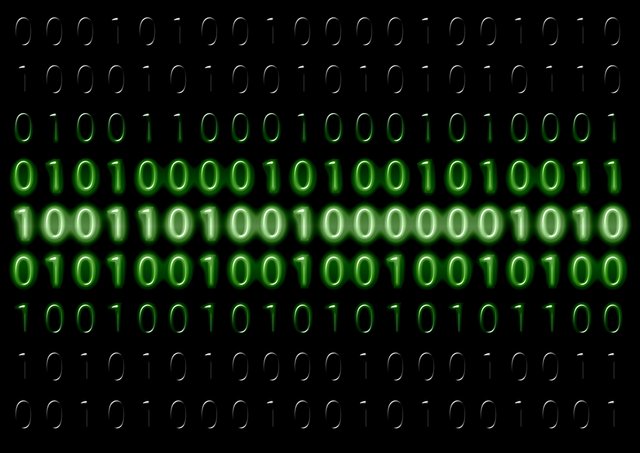The Internet / First Part - Development
Development Of The Internet

Thanks for the image to Gerd Altmann on Pixabay
What is the Internet and the Web?
The Internet is the pillar of the Web. It is the comprehensive system of linked computer networks that use the Internet Protocol (Communication rules that define how data should travel across the web) to connect billions of devices worldwide that makes the Web imaginable. The Internet is the infrastructure which allows billions of devices (computers, cell-phones, laptops, printers, and so on) -using different technologies- to be connected all together.
The Internet is a network of networks. Whenever a device is connecting to the Internet is part of a network. We join to the Internet via an ISP (Internet Service Provider) company, while servers (Computers that store data and sharing applications allow clients to access its data) are connected directly to it. When you use a modem and dial a local number to connect to an ISP, you become part of their network.
Information made of bits. A bit has two possible states. Therefore we call it binary code. It does not matter if it is a picture, a video or document, everything on the Internet is represented and sent around as bits and delivered by electronic pulses, light beams, radio waves.
The Web is a service along with other services such as email, instant messaging, collaboration built on the top of this infrastructure.
How does the Web work?
Using an online service means we are connecting to a server to reach data in the application of a webpage or a service like an email.
Every connected device has addresses, called IP address, so you can contact or visit each other. The IP address unique for every computer. An IP address made of a series of four numbers separated by dots. For example, 31.13.73.35 Facebook’s IP address. Because it is hard to remember for humans, we can identify IP addresses with a readable name, called domain name, such as facebook.com.
When we type “facebook.com” into our web browser’s (like Mozilla, Internet Explorer or Google Chrome) URL (Universal Research Locator) and then hit the enter key, the browser sends a request to find the Facebook’s IP address to a server, called DNS (Domain Name Server).
The request now sent as an HTTP (Hypertext Transfer Protocol is an application protocol that defines the communication language for clients and servers.) message to Facebook’s server to get the website.
By sending the request, a TCP (Transmission Control Protocol) connection is opened and maintained until each end has finished exchanging messages. TCP manages the all sending and receiving packets.
If the website protects your data, the SSL (Secure Sockets Layer) and TSL (SSL’s successor; Transport Layer Security) security protocols create an encrypted link between the server and the client (the browser in this example).
The server sends back the code files (HTML, CSS, JavaScript) and the assets files such as images, music, video files to the browser by breaking the files into thousands of smaller parts, called Data Packets, via routers.
Routers act like traffic managers to keep the packets moving through the networks smoothly. Once TCP verifies the delivery of many packets for that request, the browser reassembles the small parts that display the complete website to us.
Deeper Dive
History of the Internet
The USA was shocked when The Soviet Union launched Sputnik, the first artificial satellite of the World into an Earth orbit On October 4, 1957. For many Americans, it seemed the Soviets are going to win the Cold War because of the Sputnik, ultimately of the technology.
The USA began to reflect more seriously on science and technology. New agencies founded, for instance, the National Aeronautics and Space Administration (NASA) and the Department of Defence's Advanced Research Projects Agency (ARPA), to develop modern technologies such as rockets, weapons and computers. The scientific research and development contributed to the establishment of the Advanced Research Projects Agency Network (ARPANET) that became the basis of the Internet.
Unlike most of the other technologies such as the telephone, the Internet has no single creator. The Internet started in the United States about 60 years ago in the Cold War. In the beginning, it helped scientists and researchers used it to interact and share information. Now, we utilise the Internet for virtually everything, and it became an essential part of our life.
The pioneers of the Internet were bump-started in the early days of computing history, in 1969 with the U.S. Defence Department's Advanced Research Projects Agency Network (ARPANET). ARPA funded researchers developed many of the protocols used for Internet communication today.
Recognition for the initial concept that developed into the World Wide Web usually agreed to Leonard Kleinrock. In 1961, he wrote about ARPANET, the prototype of the Internet. Kleinrock, alongside with other innovators such as J.C.R. Licklider, the first director of the Information Processing Technology Office (IPTO), delivered the pillar for the universal progress of emails, media, Facebook postings and tweets that are now used online every day.
To be continued

.jpeg)
Congratulations @geshasproject! You have completed the following achievement on the Steem blockchain and have been rewarded with new badge(s) :
You can view your badges on your Steem Board and compare to others on the Steem Ranking
If you no longer want to receive notifications, reply to this comment with the word
STOP